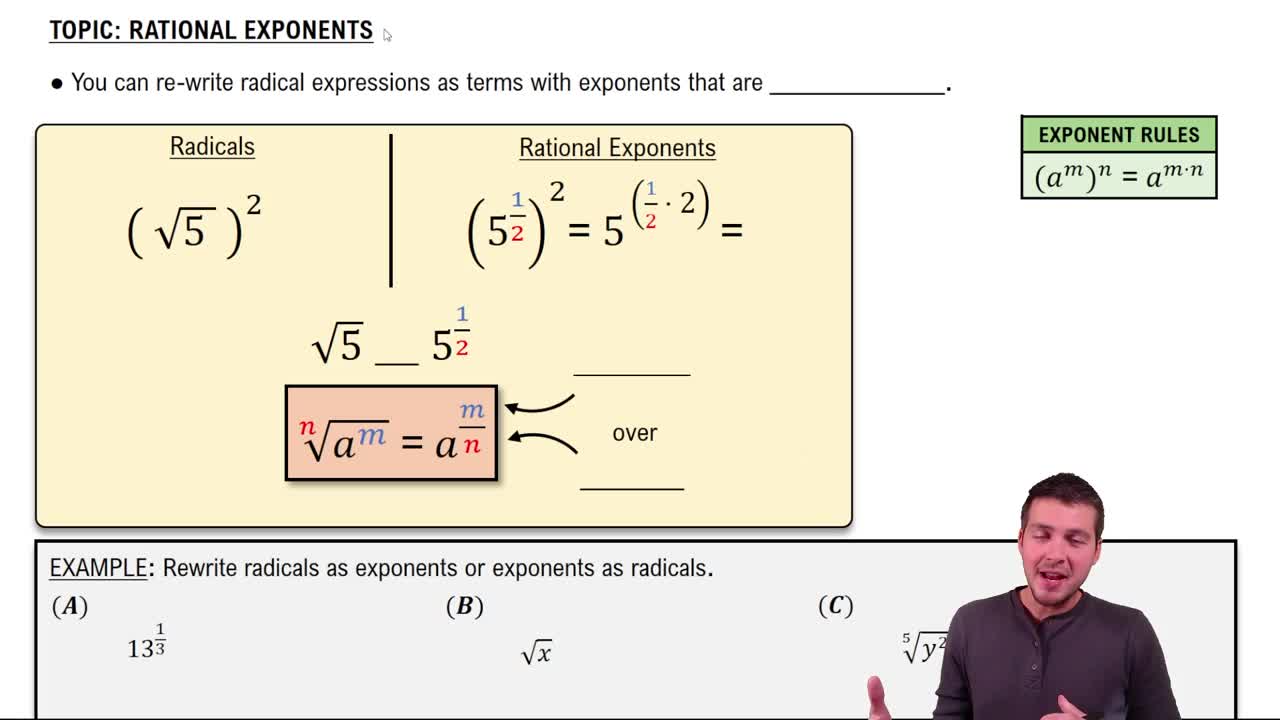Here are the essential concepts you must grasp in order to answer the question correctly.
Exponential Expressions
Exponential expressions are mathematical expressions that involve a base raised to a power, indicating how many times the base is multiplied by itself. For example, in the expression 2^3, the base is 2 and the exponent is 3, meaning 2 is multiplied by itself three times (2 × 2 × 2). Understanding how to manipulate these expressions is crucial for evaluating them correctly.
Recommended video:
Simplifying Exponential Expressions
Properties of Exponents
The properties of exponents are rules that simplify the operations involving exponential expressions. Key properties include the product of powers (a^m × a^n = a^(m+n)), the quotient of powers (a^m / a^n = a^(m-n)), and the power of a power (a^m)^n = a^(m*n). These properties allow for easier calculations and simplifications when evaluating expressions like 2^3 / 2^7.
Recommended video:
Simplifying Fractions
Simplifying fractions involves reducing them to their simplest form, where the numerator and denominator have no common factors other than 1. In the context of exponential expressions, this means applying the properties of exponents to combine the bases and adjust the exponents accordingly. For instance, in the expression 2^3 / 2^7, you would subtract the exponents to simplify it to 2^(3-7) = 2^(-4).
Recommended video:
Radical Expressions with Fractions
 Verified step by step guidance
Verified step by step guidance Verified Solution
Verified Solution

